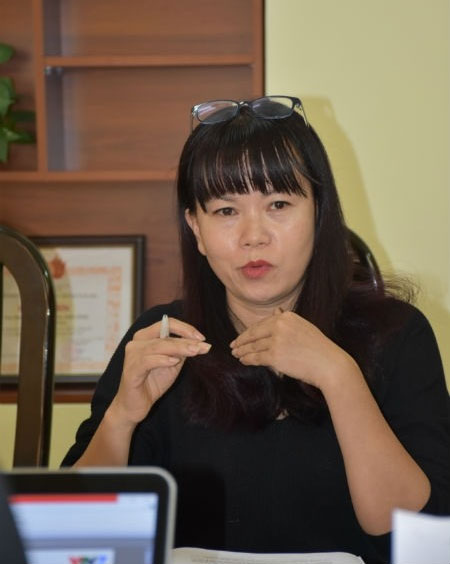[ad_1]
VietNamNet Bridge – Deputy Head of the Viet Nam Sports Administration’s Department for Mass Sports Nguyen Thi Chien talks to Ha Noi Moi (New Ha Noi) newspaper about an on-going drowning prevention programme that aims to save children’s lives by teaching them to swim.
 |
|
Nguyen Thi Chien
|
Can you brief readers on the on-going programme on teaching safe swimming to children in order to prevent drowning, which has been held in 63 localities nationwide since May?
Under the programme, which is a joint effort between the Ministry of Culture, Sports and Tourism’s Viet Nam Sports Administration and the Ministry of Education and Training, we have instructed localities to launch survival swimming classes for children, helping the children and society change their awareness about the importance and urgency of learning how to swim for physical development and drowning prevention.
We have also implemented training for swim teachers, provided instruction documents and installed pools.
Last year, we suggested the Ministry of Labour, Invalids and Social Affairs (MOLISA) submit to the Government a proposal to prioritise the teaching of swimming and water safety skills for students at school gymnastic programmes.
What progresses has the programme made so far?
There have been 2,000 swimming pools of all types set up in new rural areas. More than 10,000 trainers have received training to promote and implement the safe swimming programme in localities. The number of part-time trainers now exceeds 42,800.
Sports managers have also actively coordinated with the Youth Union, the Viet Nam Sports Administration and the Ministry of Education and Training (MOET) to implement the programme.
What do you think about doubts regarding the effectiveness of such short-term training courses?
This is a necessary solution and it has some value.
Without key partners who undestand the programme, the implementation at localities will surely face difficulties.
Besides training courses, we have coordinated with MOLISA’s Department of Child Protection and Care and the MOET’s Department of Physical Education and relevant agencies to build up a set of documents for life-guards and organised seven training classes for 820 life-guards.
Moreover, the Department for Mass Sports has supported localities such as Hai Duong, Thanh Hoa, Quang Ninh, Lang Son, Hanoi and Da Nang in their implementation. So far, 54 out of the total 63 cities and provinces have issued implementation planning and strategies for their localities.
Grassroots workers at wards, communes and schools have conducted swimming classes at 3,510 pools.
Swimming pools for the programme are still being installed at localities such as Ben Tre, An Giang, Tien Giang, Dong Thap, HCM City, Da Nang, Thua Thien-Hue, Thanh Hoa, Bac Giang, Hanoi and Hai Duong.
How have efforts to disseminate information about drowning risks and prevention measures been going?
The Viet Nam Sports Administration has worked with Viet Nam Television and broadcast 40 video clips about this matter on VTV7.
The administration has also sent an official dispatch to nine relevant ministries and sectors and all localities to have links to those clips from its portal.
Some 10,000 posters teaching swimming techniques and 5,000 leaflets on water safety skills have been printed and distributed.
We are working on the compilation of 10,000 instruction books on child drowning prevention as well.
Reports from MOLISA’s Department of Child Protection and Care show that 2,000 children die in Vietnam every year because of drowning. What are your department’s plans from now until the end of the year to reduce the number of child drowning fatalities?
Reducing the number of children who die from drowning is not an easy task as it requires hard work and care.
To increase the ratio of children who can swim—the ratio reportedly remains low at under 30 per cent now—we will continue organising 21 training classes for trainers and have the programme linked nationwide. We will also review and assess the implementation in some localities for their experiences in the coming time.
There will be a conference organised in September to discuss ways to boost the programme.
Source: VNS
| related news |
[ad_2]
Source link
